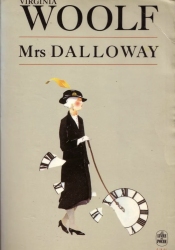Sexual Identity in Virginia Woolf's Mrs. Dalloway
Virginia Woolf’s Mrs. Dalloway, which was published in 1925, focuses on an array of issues including sexuality and homosexuality. This is known as one of Woolf’s best-known novels which focuses on the life of the protagonist, Clarissa Dalloway, in which her character is developed throughout the novel through the lens of marriage and sexuality. Mrs. Dalloway challenges the notion that the female sexuality is strictly monogamous and heterosexual through Clarissa who is a strong female character that goes against that.
As a noteworthy writer in the twentieth century, Woolf’s writings have influenced the way sexuality is used in novels and even today, there are scholars who apply the queer framework to Woolf’s fiction on themes that focus on homosexuality. Throughout the novel, Clarissa struggles with moments in the past which profoundly impact her present life. In an archived article from The New York Times called “The Perfect Hostess”, which was published in May 1925 by John. W. Crawford, he wrote how Woolf “contrives to enmesh all the inflections of Mrs. Dalloway’s personality, and many of the implications of modern civilization, on the account of those twenty-four hours” (Crawford). Woolf breaks down the traditional heterosexual love triangle between Clarissa, Peter, and Richard.
In Mrs. Dalloway, Crawford strongly highlighted the impact Woolf had writing the narration of Clarrisa:
Clarissa’s day, the impressions she gives and receives, the memories and recognitions which stir in her, the events which are initiated remotely and engineered almost to touching distance of the impervious Clarissa, capture in a definitive matrix the drift of thought and feeling in a period, the point of view of a class, and seem almost to indicate the strength and weakness of an entire civilization. (Crawford)
Along with that, Galen David Bunting, a graduate student from Oklahoma State University, mentioned how Woolf uses her characters to show how they exist in a “perpetually closeted space which requires them to conform to heteronormativity, or the assumption and need for straightness” (Bunting iv). While it might not be clearly displayed, Woolf’s novel does reveal the importance of oneself understanding of identity and ways it can be impactful in others’ lives.
Woolf’s novel unearths the concept of sexual identity and desire, which at that time, was a subject that was not explicitly explored within the contemporary world and on gender construction openly. Courtney Long, an English student at Nottingham Trent University, wrote an article called “Reclaiming Identity: Sexuality in Virginia Woolf’s Mrs. Dalloway” in which she argues how sexuality and identity are connection in Mrs. Dalloway, which is considered as Woolf’s first successful modernist text. What is more is that according to Long, the feelings expressed by Clarissa “are not recognized as a sign of homosexuality or bisexuality” (Long). In fact, the unsure depth of her feelings points out how powerful of an impact society could have on people like Clarissa in a time where homosexuality was illegal and not ever to be discussed just like with Clarissa’s mother who refused to talk of such things like that. Woolf lived in a time where homosexuality was legally a perversion and had links to mental illness which led the portrayal of this novel where the main character, whose true love might have been Sally Seaton, but still stays in a heterosexual marriage to Richard Dalloway, where there seems to be little to no connection shared between them. The article takes into consideration how the characters’ true feelings show “the turmoil it enacts upon their health: from suicide to a complete loss of self it is evident that sexual repression has a great impact upon identity” (Long).
The “Don’t Say Gay” bill, which bans public school teachers in Florida from talking about sexual orientation or gender identity sadly shows the impact it has on children’s health just as it did in Mrs. Dalloway. According to The Trevor Project, studies have shown how the LGBTQ youth already face higher health and suicide risks compared to their cisgender or straight peers (The Trevor Project). Their identity matters because a bill like this erases the “LGBTQ identity, history, and culture – as well as LGBTQ students themselves” and when they are given access to spaces that affirm their gender identity, they report lower rates of suicide attempts (The Trevor Project).
Works Cited:
Bunting, Galen David. A Kind of Ecstasy: Queer Moments and the Power of the Closet in Mrs. Dalloway. 2015. Oklahoma State University, MA thesis,
Crawford, John W. “The Perfect Hostess.” The New York Times, 10 May 1925,
https://archive.nytimes.com/www.nytimes.com/books/97/06/08/reviews/woolf-dalloway.html
Long, Courtney Skipton. “Reclaiming Identity: Sexuality in Virginia Woolf’s Mrs. Dalloway.” Literary Cultures, vol. 1, no. 1, 2017, PDF download.
The Trevor Project. “National Survey on LGBTQ Youth Mental Health 2021.” The Trevor Project,
https://www.thetrevorproject.org/survey-2021/?section=SuicideMentalHealth.

